Please continue reading, I will give you a few examples of buying lamps directly from Chinese dealers.
Case 1: There are 5 wall lights on the wall of our new restaurant. At first glance they are fine, but in reality it seems a bit crappy. I really want to replace them with better lights, but I have never found a suitable one. In addition, there is no reasonable way to add a master switch to these lights, so each lamp requires its own switch, which does reduce the range of choice.
I decided to try to build something for the future: a white plexiglass panel with LED strips on the back and brightness control through touch. My plan is to make a microcontroller-based touch controller from scratch, but I can't help but take shortcuts after discovering that the market's LED touch controllers cost less than $20.

When I first conceived my design, I imagined alternately displaying cool white and warm white LED strips, and able to achieve a gradient between warm and cold, but I quickly denied the use of cool white strips (who Want to use a cool white light source in the restaurant?).
When I was looking for a touch dimmer product in various types of single-channel and RGB models, I definitely chose a product that could change between cool white and warm white. It costs no more than a single channel product. I haven't tried it yet, but I'm sure there is no overlap in these two areas. If I really did a two-channel design, I wanted to be able to illuminate both at the same time.
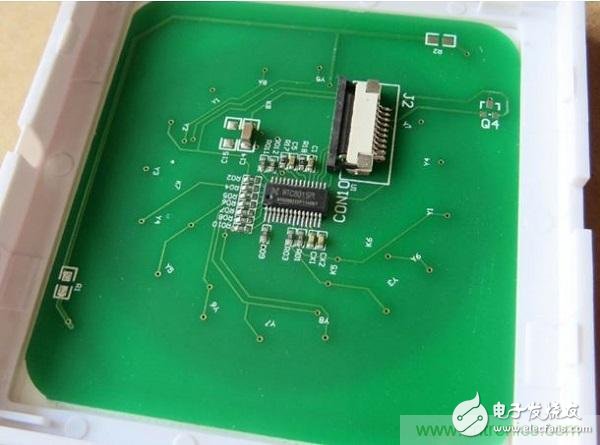
Touch the back of the panel PCB. I didn't recognize this IC, and the "W1C801SPI" written on the package could not find any information.

The motherboard's microcontroller or ASIC has been blurred, but its basic identity (perhaps a PIC) can be identified by a small number of traces.
I am very surprised by the U4 5V 1A switch. To be sure, a 7805 can fully meet the current requirements! Otherwise, if the buzzer is too annoying, I will definitely melt it with a soldering iron.
In order for my plexiglass touchpad design to work properly, I also need a power supply. Here's what I paid for $4:

12V, 1.5A power supply, bought with a plastic case.
Power expert readers: What do you think? There are no outstanding advantages, because it is too bad for me, although the input capacitance is only 400V - not much for the 240V input. I think 450V devices are more common (12V output capacitors are best for 25V power supplies).

The welding surface of the power supply.
According to some circuit traces, I guess this is a simple flyback design. In fact, there is no obvious control chip at all, unless it is disguised as a transistor or optocoupler. The gate of power transistor Q1 is connected to Q2 and IC1.
Case 2: My bathtub needs lighting. RGB lighting is best. why? I do not know. I guess because I can do it (the audio and video rack may need the same processing).
The first remote I bought used infrared:
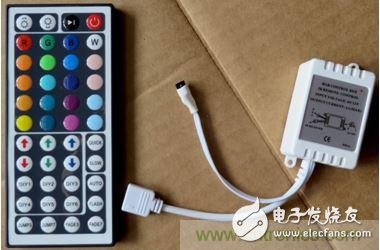
These products range in price from $5 to $10, depending on the complexity of the remote control.
But I can't reject this stylish RF (433.92MHz) touch controller for $22:

Top to bottom: Brightness, Chroma, Saturation (?), On/Off/Mode (Static or Dynamic).
After measurement, three AAA batteries have a quiescent current of 175μA, so if you are lucky, a battery can be used for one year.
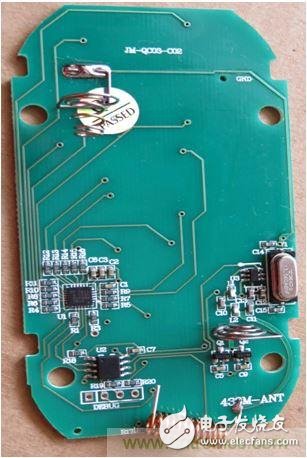
Q1 and Q2 may be voltage regulators.
U1 is Cypress's CapSense controller, U2 is an unknown microcontroller, and U3 is an RF transmitter.
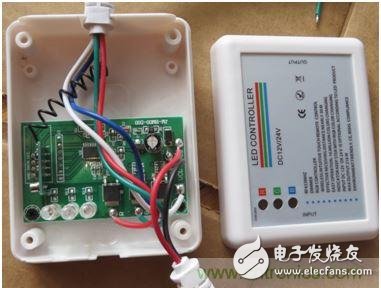
Receiver and LED driver module.
Written on the housing is 216W, which means 72W per channel, or 6A@12V. It is praised that MOSFETs have this processing power, but in this case you may want to handle a total current of up to 18A by rewiring.
U2 may be a microcontroller from STMicroelectronics. Below is a clearer picture of the RF receiver:
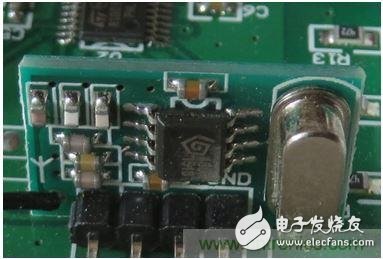
Can you recognize this IC manufacturer?
I did a brief test of this RGB controller and used the built-in LED to monitor the output. This controller works a bit strange. When selecting a color, at most two LEDs are lit. Given that this remote control has what I call saturation control, this is understandable. The fact that all three LEDs are lit means that there is a certain amount of white light, ie <100% saturation. This is fine, but for some reason, the saturation control only responds when only one LED is lit. Also, when I change the color, the output reverts to 100% saturation.
Ok, this may be good enough. But I also want to try infrared remote control, in case infrared can provide better color control. Please continue to follow my follow-up report! Source: Electronic Technology Design.
FBT WDM - Fused Biconic Taper Wavelength Division Multiplex
A fusion taper type wavelength division multiplexer, comprising an input end cone, an output end cone, and a coupling area. The input end cone is located at one end of the coupling area, and the output end cone is located at the coupling area. At the other end of the zone, the input end cone includes an input arm and a backscatter arm, the output end cone includes a through arm and a coupling arm, and the optical power is input from the input arm of the input end cone through the The coupling zone is redistributed after coupling and output from the output end cone. A part of the optical power is output from the through arm and the other part is output from the coupling arm. The coupling zone includes two optical fibers, and the cladding parts of the two optical fibers are mutually connected. Close, when pulling the taper, the two optical fibers are pulled in opposite directions but cannot move relative to each other. The two optical fibers are processed by a fusion taper device.
At present, the method of making FBT WDM in industry is to use a flame to heat and melt the fiber at a single point and then stretch it. The defect is that the heating area is too short, resulting in a short stretchable length (corresponding to the coupling length), and the fiber diameter is not small enough, so This limits the minimum channel spacing that this type of wavelength division multiplexer can achieve.
FBT WDM, also known as Fused Biconic Taper WDM and FBT WDM Splitter, along with LAN WDM Splitter, Filter WDM splitter, dense WDM splitter and coarse WDM splitter, are the most commonly used WDM device in construction of PON.
Further, the melting taper device is formed by two insulation bricks made of aluminum oxide fiber insulation material to form a cavity, and the high temperature heat source is provided by an electric heating wire made of molybdenum disilicide material, and the heating wire is located In the heating tank, the heating temperature is adjusted by adjusting the voltage at both ends of the electrodes connected to it, the optical fiber passes over the heating wire, and the taper speed is adjusted by changing the rotation speed of the programmable stepping motor driver.
Further, the two optical fibers are fused and tapered in the fusion tapering device, one of which is used as the input power of the input arm, and the other is used as the coupling arm fiber. After the tapering length reaches a certain distance, the two fibers are coupled, and the optical power is Continuously couple into the coupling arm fiber, continue to taper, and the optical power is repeatedly and alternately coupled in the two fibers.
FBT WDM, Fused Biconic Taper WDM, FBT WDM Splitter
Shenzhen GL-COM Technology CO.,LTD. , https://www.szglcom.com